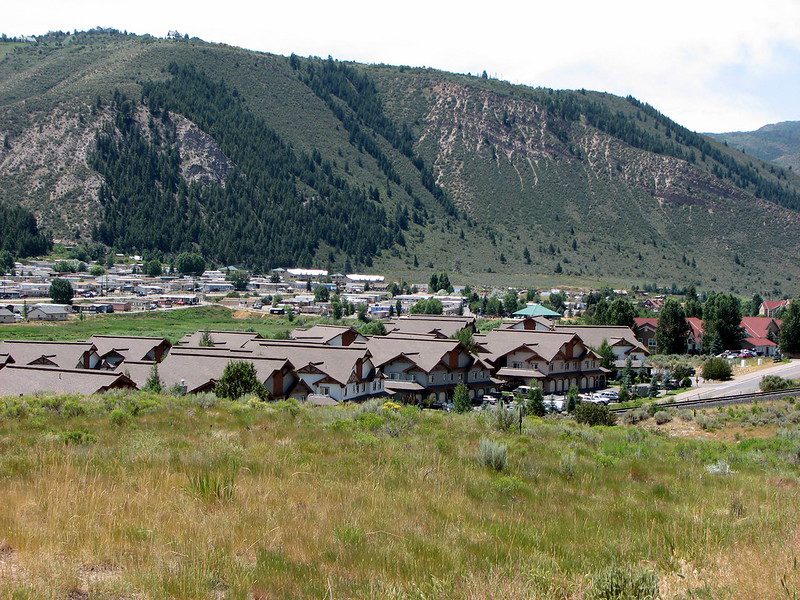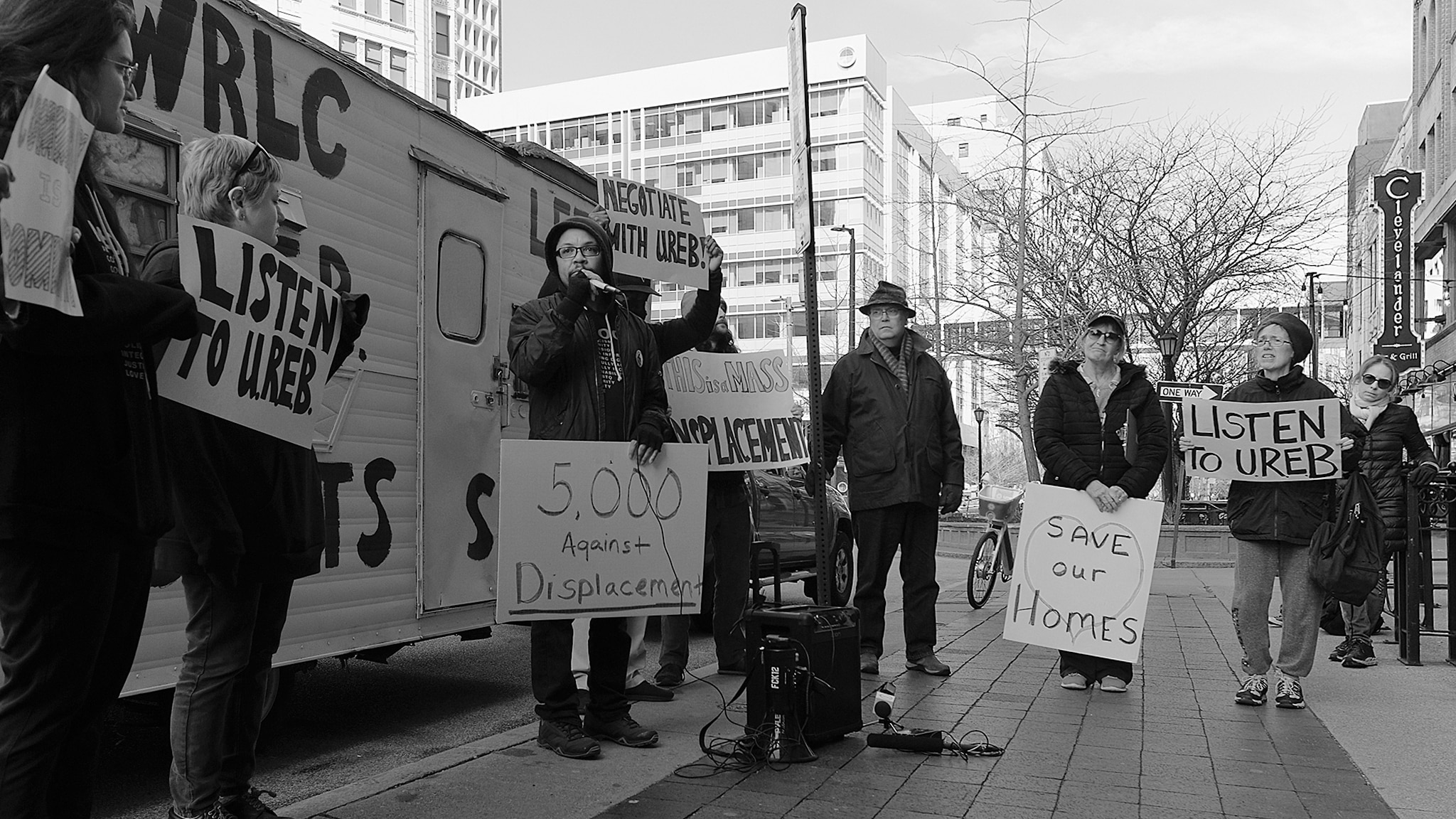
Vail, Colorado. Photo by Flickr user David Berkowitz, CC BY 2.0
This article was originally published by Stateline on Oct. 26, 2023, and is reprinted with permission.
In Colorado’s Eagle County, affordable housing is so scarce that school district leaders have pleaded with locals to open their spare bedrooms to teachers—citing the impossibility of hiring when employees have nowhere to live.
Home to popular ski resorts in Vail and Avon, the county has seen much of its housing snatched up for vacation homes and rentals. And it’s lacking areas suitable for new development.
But state leaders think a new approach could help, both with the crisis in Eagle County and the housing shortage throughout the state. They’re aiming to turn a 3.5-acre tract owned by the State Land Board into 80 units of affordable housing. And they’re working to identify other state lands that could be developed in regions with critical housing needs.
“Colorado has a lot of land that’s under state ownership that is either sitting completely vacant or being underutilized in really key areas that could be suitable for workforce housing development,” says state Sen. Dylan Roberts, a Democrat who represents Eagle County. “Taken in total, we’re talking about tens of thousands more units across the state.”
Across the West, states are facing both housing shortages and shifting ideas about how to manage millions of acres of state-owned lands that were set aside to raise revenue primarily for public schools. In some places, state leaders see an opportunity to invite development onto those lands to build more affordable housing.
Last year, Colorado celebrated the completion of a 103-unit affordable housing project on state trust land in Denver. New Mexico opened an affordable senior living community on trust land in Albuquerque and recently approved a similar development across the street. And Utah officials have worked with a developer to include 120 attainable housing units in a project on trust land near the state’s southern border.
Still, states face many constraints in how they manage their lands. Leaders acknowledge most parcels aren’t suitable for housing. And as with most development proposals, states are likely to face pushback from locals who have varying ideas about how land should be used.
Trust Lands
A vast swath of state-owned “working lands” spreads across the landscape of the West, predominantly in 11 states where managers collectively oversee more than 40 million acres, about the size of Florida. These parcels, known as trust lands, were granted to states as they entered the Union, to provide a long-term funding source for schools and local communities.
Historically, states have raised money from their trust lands by leasing them for activities such as logging, mining, grazing, and oil and gas development. But in recent years, states have worked to expand their revenue streams, adding campgrounds, wind and solar farms, condos, and carbon sequestration projects.
“There needs to be something that comes in to fill the void once we don’t have the revenue from oil and gas,” says Stephanie Garcia Richard, New Mexico commissioner of public lands. “In addition to diversifying, we want to use state land to solve community problems and needs.”
As it happens, many of the states with the largest portfolios of trust lands—including Arizona, Colorado, Utah, and Washington—also are facing some of the nation’s most acute shortages of affordable housing.
[RELATED ARTICLE: Colorado Passed a Historic Affordable Housing Measure. Is it Enough?]
Colorado Gov. Jared Polis, a Democrat, directed state officials in 2019 to inventory state-owned land and identify parcels that might be suitable to be leased or sold for affordable housing. The State Land Board, which manages 2.8 million acres of trust lands, issued a report last year that identified 16 parcels totaling more than 900 acres within cities’ existing boundaries, plus another 64 parcels just outside city limits.
“In a majority of cases, trust land really isn’t the suitable site for affordable housing, but in the instances where it is, it can work really well and essentially be a win-win,” says Kristin Kemp, the Land Board’s spokesperson. “Our mandate is to use these lands to earn income for public schools. If we can enter into an agreement with a developer where there’s a revenue stream for the Land Board, we’re very happy to make that happen.”
Earlier this year, the state passed a law sponsored by Roberts that will provide $13 million to support public-private partnerships to build housing on state-owned land. The state’s Public-Private Partnership Collaboration Unit will use the money to help finance projects, conduct engineering assessments, and build infrastructure to get parcels ready for development. The 80-unit project in Eagle County will receive $2 million.
“We’re using this as a template for what the state could do,” says Natriece Bryant, the agency’s director, who noted that projects seem to benefit especially from the kind of financing the state can provide.
In Washington, the state Department of Natural Resources has asked lawmakers for $3 million to improve infrastructure on trust land parcels where the state is trying to promote affordable housing. The money would establish a pilot project to connect sites to power, water, sewer, and roads, making it more feasible for affordable housing developers to pursue projects.
“I don’t think many developers look to us and go, ‘Oh, they’re open for business.’ That’s a misconception.”
The agency’s portfolio includes about 7,000 acres of “transition lands,” which are largely surrounded by other development and no longer suitable for timber harvests or agriculture. The department has explored leasing lands directly, exchanging them, or auctioning parcels to developers or local governments. Agency leaders hope the effort allows trust lands to play a growing role in providing affordable housing.
“We’re learning about this as we’re going,” says Kenny Ocker, a spokesperson with the agency. “I don’t think many developers look to us and go, ‘Oh, they’re open for business.’ That’s a misconception, but we don’t pop directly to mind when people are looking to build in an area.”
Last year, leaders in New Mexico completed the construction of an affordable senior living facility built on trust lands in Albuquerque. State officials, local government leaders, lenders, and developers came together with a “tapestry” of funding sources to make the project happen, says Garcia Richard, the public lands commissioner. She says the state is looking at more proposals to follow that template.
“We are now basically recruiting developers,” she says. “New Mexico has just an unsustainable housing situation, and state lands exist in every single county of our state, in rural places and urban places.”
Challenges
While some states tout the potential for housing on trust lands, leaders acknowledge that those goals face many hurdles. Most trust lands exist in a checkerboard pattern across the landscape, and the vast majority of parcels are in areas unsuited for development or far from populated areas.
State land agencies often lack the expertise to develop land themselves, and requirements that they sell parcels for market rates often mean affordable projects are priced out. Officials are still figuring out which mechanisms—leases, land exchanges with local governments, auctions to developers—might work best for getting housing built. And some agencies are overseen by boards that don’t view it as a priority.
“Affordable housing is a very good option in some places, but the stars and moons all have to line up,” says Lisa Schneider, executive director of the National Association of State Trust Lands, a nonprofit consortium of state land managers. “It really just varies from state to state on what your land holdings happen to be and the governance of your agency.”
Some states say their hands are tied by their obligation to manage the lands to provide school funding.
“Our mandate is to maximize revenue for our beneficiaries,” says Aaron Langston, an assistant managing director of real estate development with the Utah School and Institutional Trust Lands Administration. “All of our [suitable] parcels are highly sought after by the development community, and they offer top dollar for those. It’s difficult for us to say, ‘Let’s take less revenue so we can help fix the housing shortage.’”
Utah has begun looking at ways to promote affordable housing on trust lands, including working with local governments to enact zoning changes that allow increased density. That allows the state to double the number of units in a development while still meeting its revenue obligations, lowering costs for renters. It’s also exploring the creation of Public Improvement Districts, which can levy local taxes to generate capital for infrastructure.
Unlike Utah, some states—including Colorado, New Mexico, and Washington—say their constitutions give them more flexibility to manage trust lands for revenue while also considering other factors, such as habitat, recreation, and community needs.
Meanwhile, officials in Alaska and Idaho say their land agencies have not yet explored policies or projects to promote affordable housing on trust lands.
In states that have, officials acknowledge they’ve had to deal with community concerns, as with any development proposal. While some residents oppose new construction or higher-density housing, others perceive state lands as cherished areas to be preserved.
Leaders in some states say they won’t pursue development on parcels that provide critical habitat or recreation opportunities.
“Everybody has an attachment to their public lands,” says Ocker, with the Washington agency. “The places where we’re exploring this are isolated parcels that are already developed around, to the point where they’re not large or ecologically contiguous enough to be managed for forestry.”
Stateline is part of States Newsroom, a nonprofit news network supported by grants and a coalition of donors as a 501(c)(3) public charity. Stateline maintains editorial independence. Contact Editor Scott S. Greenberger for questions: [email protected]. Follow Stateline on Facebook and Twitter.




To ensure affordability land trust and/or non-profit ownership/management of these properties is essential.